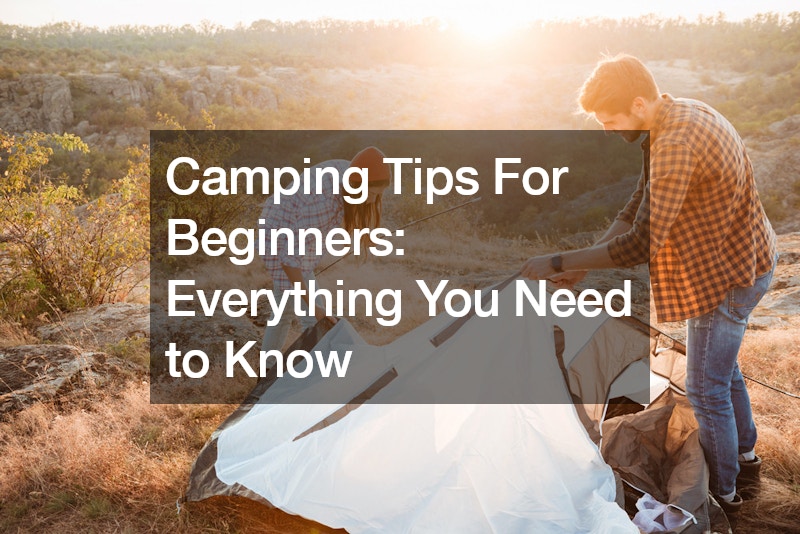
The allure of the outdoors is undeniable. Camping offers a chance to escape the hustle and bustle of everyday life, reconnect with nature, and create lasting memories. But for first-time campers, the prospect of a camping trip can be daunting. Fear not, nature newbies! This comprehensive guide will equip you with everything you need to know for a successful and enjoyable camping adventure.
Planning Your Camping Trip
Choosing Your Destination: Campgrounds come in all shapes and sizes. National and state parks offer stunning natural landscapes, while private campgrounds often have amenities like pools and laundry facilities. Consider your priorities: Do you crave a rustic experience or prefer a more comfortable setting? Research potential campsites beforehand, paying attention to factors like availability, proximity to activities, and pet-friendliness (if applicable).
Gearing Up: Don’t break the bank before your first camping trip! Borrow essential gear from friends or family if possible. Many stores also offer camping rentals. Here’s a basic checklist to get you started:
- Tent: A good quality tent is your home away from home. Choose a tent size that comfortably accommodates your group and consider the weather conditions at your chosen campsite.
- Sleeping Bags: Select a sleeping bag with a temperature rating appropriate for the expected nighttime lows.
- Sleeping Pads: Sleeping pads provide insulation from the cold ground and improve comfort.
- Camp Chairs: Relaxing by the campfire is much more enjoyable with comfortable seating.
- Lantern/Headlamp:** A reliable light source is crucial for nighttime activities. Headlamps offer hands-free illumination.
Packing Essentials: Beyond the core camping gear, here are some additional items to consider:
- Clothing: Pack layers to accommodate changing weather conditions. Don’t forget comfortable footwear, a swimsuit (if your campsite has water access), and a hat.
- Cooking Supplies: Pack a camp stove or campfire grate, cooking utensils, plates, cups, and a cooler for perishable food.
- First-Aid Kit: Be prepared for minor injuries with a well-stocked first-aid kit.
- Sun Protection: Pack sunscreen, sunglasses, and a hat to shield yourself from the sun’s rays.
- Bug Spray: Keep pesky insects at bay with insect repellent.
- Toiletries: Pack essential toiletries like soap, toothpaste, and toilet paper (check if your campsite has restrooms).
- Trash Bags:** Leave no trace! Pack plenty of trash bags to dispose of your waste properly.
Setting Up Camp
Finding the Perfect Spot: Look for a level, well-drained area for your tent. Avoid setting up under dead trees or low-hanging branches. If using a fire ring, ensure it’s a designated fire pit and clear of flammable materials.
Pitching Your Tent: Practice setting up your tent at home before your trip to avoid frustration in the field. Follow the manufacturer’s instructions carefully. Most tents require staking down with tent stakes and guy lines to ensure stability.
Creating a Comfortable Living Space: Unpack your sleeping bags and sleeping pads inside your tent. Organize your gear to maximize space and keep essentials easily accessible.
Building a Campfire (Remember Fire Safety!)
Check Fire Regulations: Always check local fire regulations before starting a campfire. Some areas may have fire restrictions in place due to weather conditions.
Gather Firewood: Look for downed and seasoned wood for the best campfire experience. Avoid cutting down live trees.
Building the Fire: Use a simple method like the log cabin fire for beginners. Start with small kindling and gradually add larger logs as the fire grows.
Extinguishing the Fire: Never leave a campfire unattended. Drown the fire with water and stir the ashes to ensure it’s completely extinguished before leaving the campsite.
Campfire Cooking:
Simple Meals are Best: Keep it simple for your first camping trip. Pre-cooked sausages, hot dogs, and hamburgers are easy to cook over a campfire.
Utensils and Cookware: Invest in a long-handled camp fork for safe handling of food over the fire. A cast-iron skillet is a versatile tool for campfire cooking.
Food Safety: Maintain proper food safety practices. Pack a cooler with ice to keep perishable food cold and store cooked food away from raw ingredients.
Follow Leave No Trace Principles
1. Plan Ahead and Prepare: Before embarking on your outdoor adventure, research the area’s regulations, weather conditions, and terrain. Plan your trip carefully, considering factors such as group size, equipment, and route selection to minimize environmental impact.
2. Travel and Camp on Durable Surfaces: Stick to designated trails and campsites to avoid damaging fragile vegetation and soil. When setting up camp, choose durable surfaces such as established campsites or bare ground to reduce impact on the environment.
3. Dispose of Waste Properly: Pack out all trash, including food scraps, packaging, and personal hygiene products. Use designated waste disposal facilities or carry a portable trash bag to transport waste out of the wilderness. Practice proper waste management to prevent contamination of water sources and wildlife habitats.
4. Leave What You Find: Preserve the natural environment by leaving rocks, plants, and other natural objects undisturbed. Avoid picking flowers, carving initials into trees, or collecting souvenirs to maintain the integrity of the ecosystem for future generations.
5. Minimize Campfire Impacts: Follow local regulations regarding campfires and use existing fire rings when possible. Keep fires small, use only dead and downed wood for fuel, and fully extinguish fires before leaving the campsite. Consider using alternative cooking methods such as portable stoves to reduce the risk of wildfires and minimize environmental damage.
By following these Leave No Trace principles, outdoor enthusiasts can contribute to the conservation of natural landscapes and promote sustainable recreation practices for future generations to enjoy.
.

